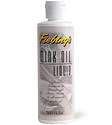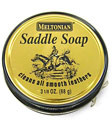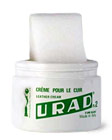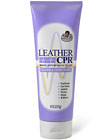How to: Care for Leather
Whether it's your boots, a bag, a jacket or even a vintage club chair, proper care will prolong the life of your leather. The natural fibers will eventually break down with time, so some maintenance is necessary. Think of leather like your skin—for your face to look its best, you've got to clean it up now and again and keep it hydrated. Your leather jacket isn't really that different.
If any of your leather gets dirty, spilled on or starts to take on too much indigo from your raw denim, clean it off with a damp sponge and a dab of mild detergent, saddle soap or (for indigo stains especially) mink oil, working in small circles. Just remember to then let it dry at room temperature overnight. Leather should always be dry when you condition it.
Dampen a soft cloth with water and apply a quarter-sized amount of conditioner to the cloth. Microfiber cloths are ideal for this job. Begin by rubbing in small circles, eventually working your way over the entire item. Never apply conditioner directly to the leather itself, apply it to cloth first. And remember, several lighter passes are better than one heavy-handed application. Especially on the rough, dry or cracked patches. Just give yourself 30 minutes in between coats. Stay clear of creams and conditioners that contain harsh chemical waxes or silicones because they'll prevent the leather from breathing and in some cases even dry out the leather more.
Liquid oils will likely darken leather a little, while pastes often contain waxes and water repellants to dilute the pure oil, thus softening its effect. Remember, don't be afraid of it. Leather is tough, and there's no need to go easy with cotton balls or Q-tips. Use a rag for oils, and your hands for pastes. Work the product into the leather per the instructions (usually 2-3 coats and then let dry overnight). Retreat every 6 months with a single coat, or when the leather feels dry.
Store off-season leather goods in a cool place, away from moisture and never in plastic (a breeding ground for mold and mildew). Keep the items in a fabric garment bag, box or cover to protect it from dust and dirt. Because items like leather jackets can begin to lose shape when left unworn for long periods, stuff it with tissue paper. This helps keep the proper shape, but it also protects from dampness and mildew.
When you have new leather soles, you should avoid puddles and rainy days, at least until the soles are well scuffed. Should you encounter a little liquid, you should let your soles dry naturally, so that the layers of leather don't separate. If you get salt on them, wash it off with a damp cloth. You needn't polish or condition your soles, unless you're planning on kneeling in front of a crowd.
© Copyright 2024 Degitao Technology Pvt. Ltd - All Rights Reserved. | Privacy Policy | Terms & Conditions





